Milwaukee 9685-20 Handleiding
Milwaukee
Niet gecategoriseerd
9685-20
Bekijk gratis de handleiding van Milwaukee 9685-20 (31 pagina’s), behorend tot de categorie Niet gecategoriseerd. Deze gids werd als nuttig beoordeeld door 21 mensen en kreeg gemiddeld 4.6 sterren uit 11 reviews. Heb je een vraag over Milwaukee 9685-20 of wil je andere gebruikers van dit product iets vragen? Stel een vraag
Pagina 1/31

Do not use hoist to lift, support or otherwise transport
people.
Catalog No. Rated Load
9682-20 3/4 Ton
9683-20 (750 Kg)
9684-20
9685-20 1½ Ton
9686-20 (1500 Kg)
9687-20
9688-20
9689-20 3 Ton
9690-20 (3000 Kg)
9691-20
OPERATOR’S MANUAL
HAND OPERATED
LEVER HOIST
TO REDUCE THE RISK OF INJURY, USER MUST READ AND UNDERSTAND OPERATORS
MANUAL.
To reduce the risk of injury, do not alter or modify the
hoist and only use MILWAUKEE replacement parts.
Alterations or modification of hoist and use of non
MILWAUKEE parts can lead to dangerous operation
and injury.
07/12

2
Each MILWAUKEE Lever Operated Chain Hoist is built in
accordance with the specifications contained herein and at
the time of manufacture complies with our interpretation of
applicable sections of *American Society of Mechanical
Engineers Code (ASME) B30.21 and the *American National
Standards Institute ANSI/ASME HST-3M.
*Copies of this Standard can be obtained from ASME Order
Department, 22 Law Drive, Box 2300, Fairfield, NJ 07007-
2300, U.S.A.
1. operate a malfunctioning or unusually performing NOT
hoist.
2. operate the hoist until you have thoroughly read NOT
and understood this manual.
3. operate a hoist which has been modified withoutNOT
the manufacturer’s approval or certification to be in
conformity with applicable OSHA regulations.
4. lift or pull more than rated load for the hoist.NOT
5. use damaged hoist or hoist that is working NOT Not
properly.
6. use hoist with twisted, kinked, damaged, or worn NOT
load chain.
7. operate with any lever extension (cheater bar).NOT
8. attempt to “free chain” the hoist while a load is NOT
applied.
9. use the hoist to lift, support, or transport people.NOT
10. lift loads over people and make sure all personnel NOT
remain clear of supported load.
11. attempt to lengthen the load chain or repair dam-NOT
aged load chain.
12. Protect the hoists load chain from weld splatter or other
damaging contaminants.
13. operate a hoist when it is restricted from forming a NOT
straight line from hook to hook in the direction of loading.
14. use load chain as a sling or wrap load chain around NOT
load.
15. apply the load to the tip of the hook or to the NOT
hook latch.
16. apply load unless load chain is properly seated in NOT
the chain wheel(s) or sprocket(s).
17. apply load if bearing prevents equal loading on all NOT
load supporting chains.
18. operate beyond the limits of the load chain travel.NOT
19. leave load supported by the hoist unattended NOT
unless specific precautions have been taken.
20. allow the chain or hook to be used as an electrical NOT
or welding ground.
21. allow the chain or hook to be touched by a live NOT
welding electrode.
22. remove or obscure the warnings on the hoist.NOT
23. operate a hoist which has been securely NOT Not
attached to a suitable support.
24. operate a hoist unless load slings or other approved NOT
single attachments are properly sized and seated in the
hook saddle.
25. lift loads that are balanced and the holding action NOT Not
is secure, taking up slack carefully.Not
26. operate a hoist unless all persons are and remain NOT
clear of the supported load.
27. Report malfunctions or unusual performances of a hoist,
after it has been shut down until repaired.
28. operate a hoist on which the safety placards or NOT
decals are missing or illegible.
29. Be familiar with operating controls, procedures and
warnings.
1. Maintain a firm footing or be otherwise secured when
operating the hoist.
2. Check brake function by tensioning the hoist prior to
each lift or pulling operation.
3. Use hook latches. Latches are to retain slings, chains, etc.
under slack conditions only.
4. Make sure the hook latches are closed and not supporting
any parts of the load.
5. Make sure the load is free to move and will clear all
obstructions.
6. Avoid swinging the load or hook.
7. Avoid lever “fly-back” by keeping a firm grip on the lever
until operating stroke is completed and lever is at rest.
8. Inspect the hoist regularly, replace damaged or worn
parts, and keep appropriate records of maintenance.
9. Use MILWAUKEE parts when repairing the unit.
10. Lubricate load chain as recommended in this manual.
11. operate except with manual power.NOT
12. permit more than one operator to pull on lever at NOT
the same time. More than one operator is likely to cause
hoist overload.
13. allow your attention to be diverted from operating NOT
the hoist.
14. allow the hoist to be subjected to sharp contact with NOT
other hoists, structures, or objects through misuse.
15. adjust or repair the hoist unless qualified to perform NOT
such adjustments or repairs.
The hoists are intended for general industrial use for
moving loads within their load ratings. Prior to
installation and operation, the user should review the
application for abnormal environmental or handling
conditions.
Improper operation of a hoist can create a potentially
hazardous situation which, if not avoided, could result in
death or serious injury. To avoid such a potentially
hazardous situation, THE OPERATOR SHALL:
Improper operation of a hoist can create a potentially
hazardous situation which, if not avoided, could result in
minor or moderate injury. To avoid such a potentially
hazardous situation, THE OPERATOR SHALL:
SAFETY PRECAUTIONS

3
Catalog Capacity Lift
Number Tons (Kg) Ft (M)
Table 1 - Specifications
9682-20 3/4 (750) 5 (1.5)
9691-20 3 (3,000) 20 (6.1)
9689-20 3 (3,000) 5 (1.5)
9686-20 1½ (1,500) 10 (3.0)
9687-20 1½ (1,500) 20 (6.1)
9688-20 1½ (1,500) 25 (7.6)
9685-20 1½ (1,500) 5 (1.5)
9684-20 3/4 (750) 20 (6.1)
9683-20 3/4 (750) 10 (3.0)
9690-20 3 (3,000) 10 (3.0)
Each MILWAUKEE hand operated lever hoist is built in accordance with the specifications contained herein and at the time of
manufacturer complies with our interpretation of applicable sections of the American Society of Mechanical Engineers (ASME)
Code B30.21 “Manually Lever Operated Hoists” and the Occupation Safety and Health Act (OSHA). Copies of this standard
can be obtained from ASME Order Department, 22 Law Drive, PO Box 2300, Fairfield, NJ 07007-2300, USA.
The safety laws for elevators and for dumbwaiters may specify construction details that are not necessarily incorporated in this
hoist. We recommend the use of equipment that meets state and national safety codes. Milwaukee Electric Tool Corporation
cannot be responsible for applications other than those for which MILWAUKEE equipment is recommended.
1. Read ASME B30.21 safety standard for “Manually Lever Operated Hoists” and this manual thoroughly.
2. Do not permit more than one operator to operate lever hoist at one time.
1. Upper Hook
2. Hoist Frame
3. Free Chaining Knob
4. Load Chain
5. Directional Lever
6. Lever
7. End Ring
8. Lower Hook
9. Hook Tip
10. Hook Latch
1
2
8
4
10
9
7
6
5
3
SPECIFIC SAFETY RULES - LEVER HOIST
FUNCTIONAL DESCRIPTION
Product specificaties
| Merk: | Milwaukee |
| Categorie: | Niet gecategoriseerd |
| Model: | 9685-20 |
Heb je hulp nodig?
Als je hulp nodig hebt met Milwaukee 9685-20 stel dan hieronder een vraag en andere gebruikers zullen je antwoorden
Handleiding Niet gecategoriseerd Milwaukee

15 September 2025
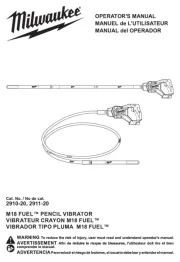
1 September 2025
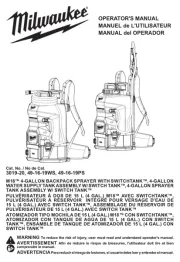
1 September 2025
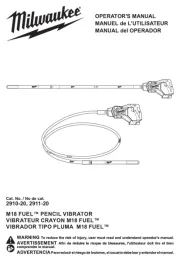
1 September 2025
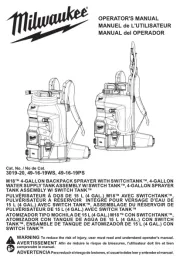
1 September 2025
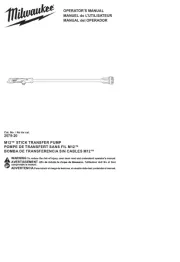
19 Augustus 2025
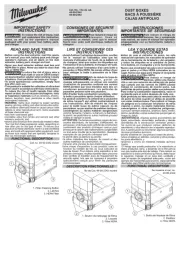
19 Augustus 2025
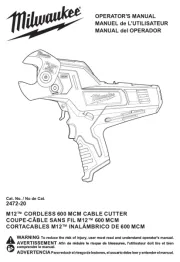
19 Augustus 2025

18 Augustus 2025

18 Augustus 2025
Handleiding Niet gecategoriseerd
- Geemarc
- Ultenic
- Zehnder
- Backyard Discovery
- PATLITE
- Vitammy
- Meister Craft
- Outdoorchef
- Roidmi
- Heller
- Access Lighting
- Xvive
- Sightmark
- Anton/Bauer
- BT
Nieuwste handleidingen voor Niet gecategoriseerd
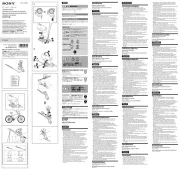
16 September 2025
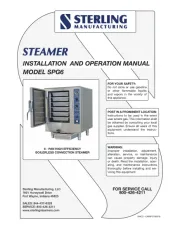
16 September 2025
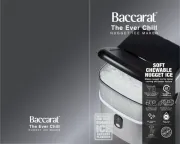
16 September 2025
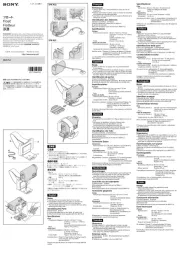
16 September 2025
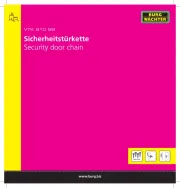
16 September 2025
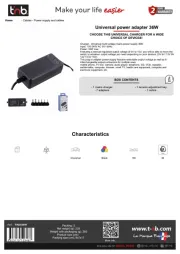
16 September 2025
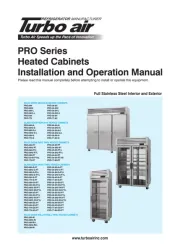
16 September 2025
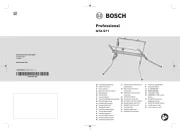
16 September 2025
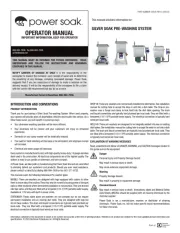
16 September 2025
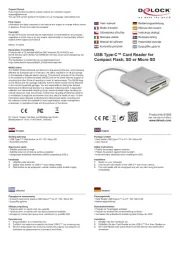
16 September 2025